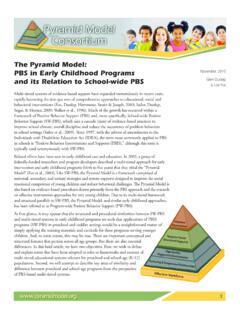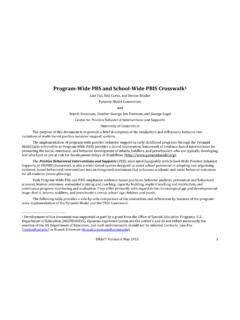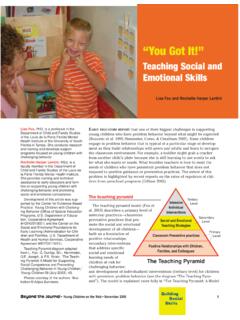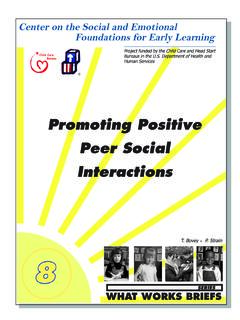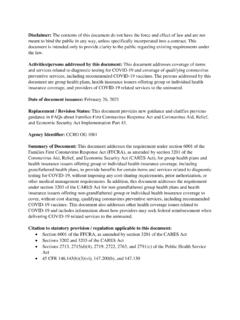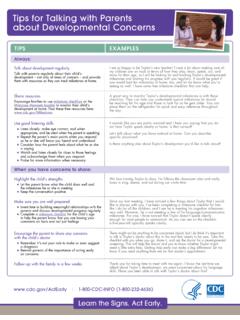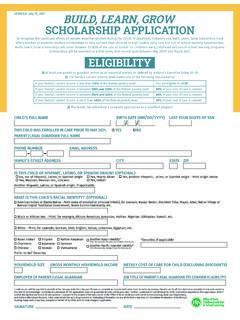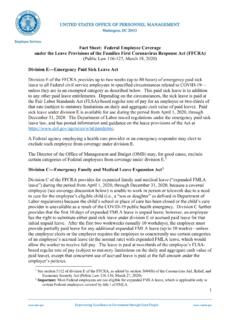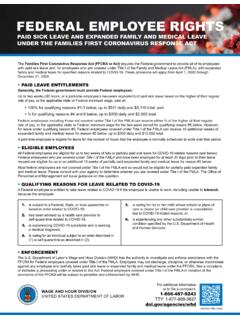Transcription of Visual Supports for Routines, Schedules, and Transitions
1 Visual Supports for routines , Schedules, and Transitions Introduction Visual schedule Visual Supports can help children learn new skills and prevent challenging behavior. Visuals help young children learn and follow routines by helping them understand what is happening now and what is going to happen next.. Visuals serve as reminders for verbal directions and help children know exactly what is expected of them. Use the following Visual cue cards and templates to develop Visual Supports that work for your child and family! National Center for Pyramid Model Innovations | The reproduction of this document is encouraged. Permission to copy is not required.
2 If modified or used in another format, please cite original source. This is a product of the National Center for Pyramid Model Innovations and was made possible by Cooperative Agreement #H326B170003. which is funded by the Department of Education, Office of Special Education Programs. However, those contents do not necessarily represent the policy of the Department of Education, and you should not assume endorsement by the Federal Government. Pub: 09/30/20. National Center for Pyramid Model Innovations | 1. Visual Supports for routines , Schedules, and Transitions Visual Schedules Using a Visual schedule at home provides young children with predictability ( , they know what activity or routine is coming and when) and consistency ( , the schedule of activities or routines is the same).
3 Visual schedules help children know what their day will look like by letting them know when activities or routines will happen. These Visual cards will make this process easy! Making a Visual schedule 1. Identify when you need a Visual schedule . A Visual schedule might outline parts of a day, half-day, or an entire day. Pick the times of your day when your child might need extra support to engage in activities or cope with Transitions . 2. List the steps you want your child to follow. For example, for a bedtime routine, you might list: go to the bathroom wash put on pajamas brush teeth read a book bed time TIP! Structure the day so that fun activities follow ones that are challenging.
4 You might put cleaning up right before going outside or brushing teeth right before reading books. 3. Cut out the cards. Optional: Print cards on cardstock, attach to thicker paper, laminate, or make cards sturdy by covering with clear tape or clear contact paper. 4. Select the Visual cards for the schedule you want to create. Don't see a Visual you need? It's easy to make your own! See the page 4 for directions. 5. Get creative! Use tape, Velcro, or magnets to post the Visual cards in the order your child will do them. families find that posters, file folders, or hanging pocket charts work great for Visual schedules. TIP! Schedules work best when children can see when they are done with an activity.
5 Here are some ideas: Create a pocket at the bottom or end of the display that represents finished or all done. Place visuals in envelope or pocket when finished. Make a schedule with visuals that can be removed. If your schedule is a book format, turn the page. Use a placeholder (like a clothespin or paper clip) that can move from Visual to Visual . 6. Post the schedule . Place the schedule at the child's eye level in a place where you go often ( , kitchen) to promote consistent use. Use the schedule as part of your daily routine! | National Center for Pyramid Model Innovations 2. Visual Supports for routines , Schedules, and Transitions How to Use Teach your child how to use the schedule by explaining and demonstrating how to use the pictures.
6 Refer to the Visual schedule throughout the day ( , We just got home, let's go check your schedule to see what is next. ). Talk about the schedule ( , Look, you just got dressed. Now it is time for breakfast! ). Make it active! Teach the child to indicate what is complete. You can have your child flip the card over or remove it from the schedule and put in the finished pocket depending on how your schedule is set up. Celebrate! Be sure to celebrate your success and the child's success. Acknowledge and provide positive feedback to your child after activities or routines , especially ones that are not as fun ( , You cleaned up! You must be feeling so proud!)
7 Or Your teeth are so clean now. You are so healthy! ). First/Then Boards First/Then boards can be used for a variety of reasons. They First Then can be used to: Put on Pajamas Read a Book Assist with transition from one activity to another. For example, First clean up, then play outside.. Break routines into smaller steps. For example, Go to the bathroom and wash hands, then brush your teeth.. Encourage children to complete tasks they might not enjoy in order to do a more enjoyable task. For example, First brush your teeth, then you can have your tablet.. First Then Making a First/Then Board 1. Cut out the cards. Optional: Print cards on cardstock, Go to the Bathroom Wash Hands Brush Teeth attach to thicker paper, laminate, or make cards sturdy by covering with clear tape or clear contact paper.
8 2. Select the Visual cards that represent the activities you need. Don't see a Visual you need? It's easy to make your own! See page 4 for directions. 3. Make the boards. Print the board templates provided on pages 5 and 6, or get creative and make your own! Use a file folder, large (4x6) index card, or a piece of cardboard. You want it large enough to hold several of the visuals. Divide board into two sections by making a vertical line to make a FIRST section and a THEN. section. Label one section First and the other section Then.. 4. Attach cards. If you are able, use small pieces of Velcro on the back of the pictures. TIP!
9 Velcro has a rough side and a soft side. Be sure you use the same side on all the pictures. Next, place a strip of opposite Velcro on both sides of the First/Then board. | National Center for Pyramid Model Innovations 3. Visual Supports for routines , Schedules, and Transitions How to Use Try it out! As you use the First/Then board with your child, place a preferred activity or item on the then . side of the board. This will increase the likelihood that the child will complete the activities on the first . side of the board. See the examples below: First Then First Then First Then Brush Teeth Read a Book Meal Indoor Play Get Dressed Outdoor Play Brush Teeth Read a book Meal Indoor play Get dressed Outdoor play Flip the picture over, as each activity is completed, to indicate that the activity is finished.
10 If you place a strip of Velcro on the front of the picture card, you can flip it over and stick it to the board. Celebrate! Acknowledge and provide feedback to your child after they complete the first activity and are moving to what is coming next ( , You washed your hands and now we get to eat our yummy snack! What a big kid! Or You put on your pajamas and now we get to read a book together. Thanks for being such a great bedtime helper! ). Making Your Own Visual Cards u n d y g Th roerapy Pla Don't see a Visual you want or a Visual that matches your activity? It's easy to make your own! 1. Identify the steps in your routine that are missing Visual cards.

